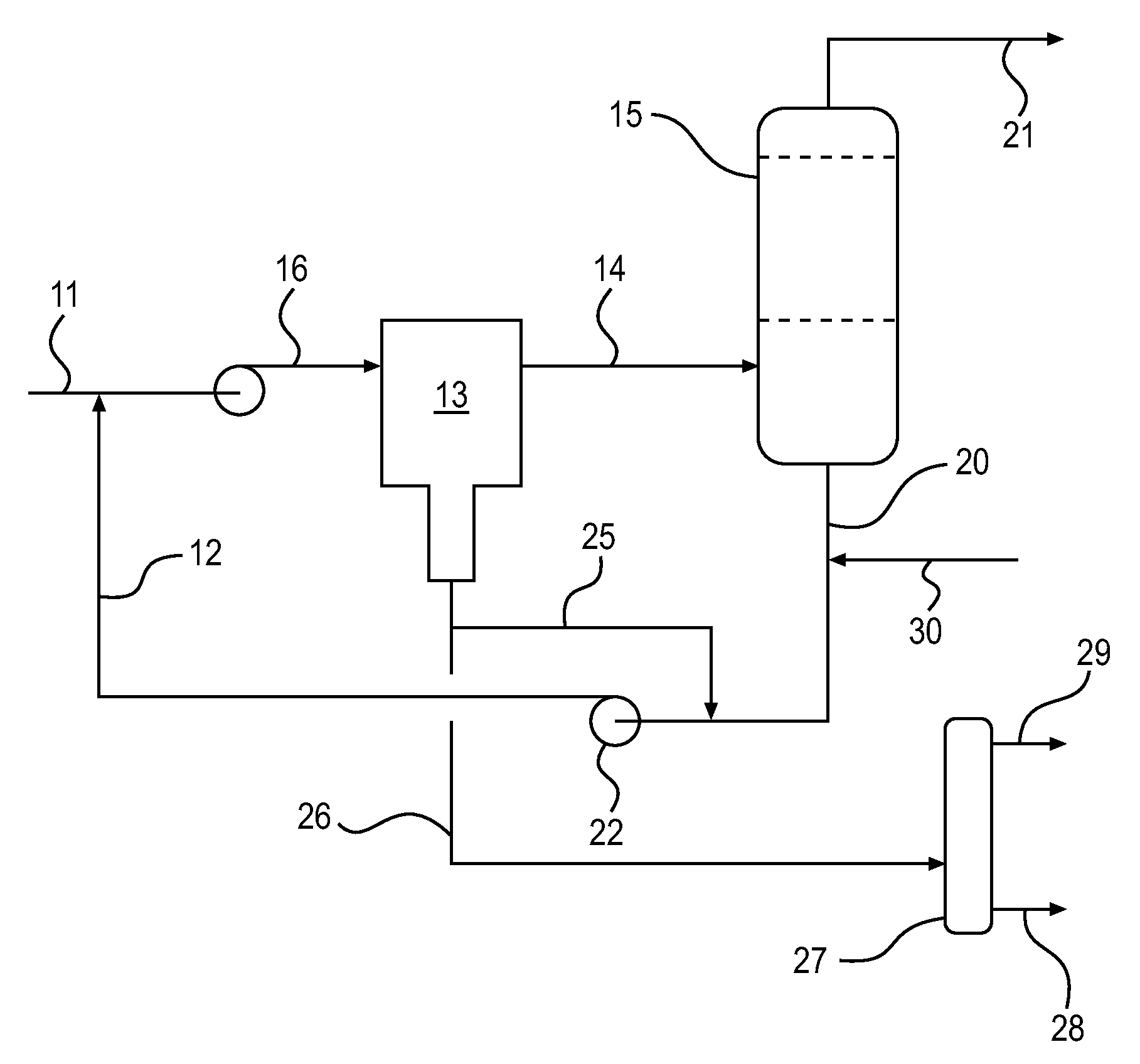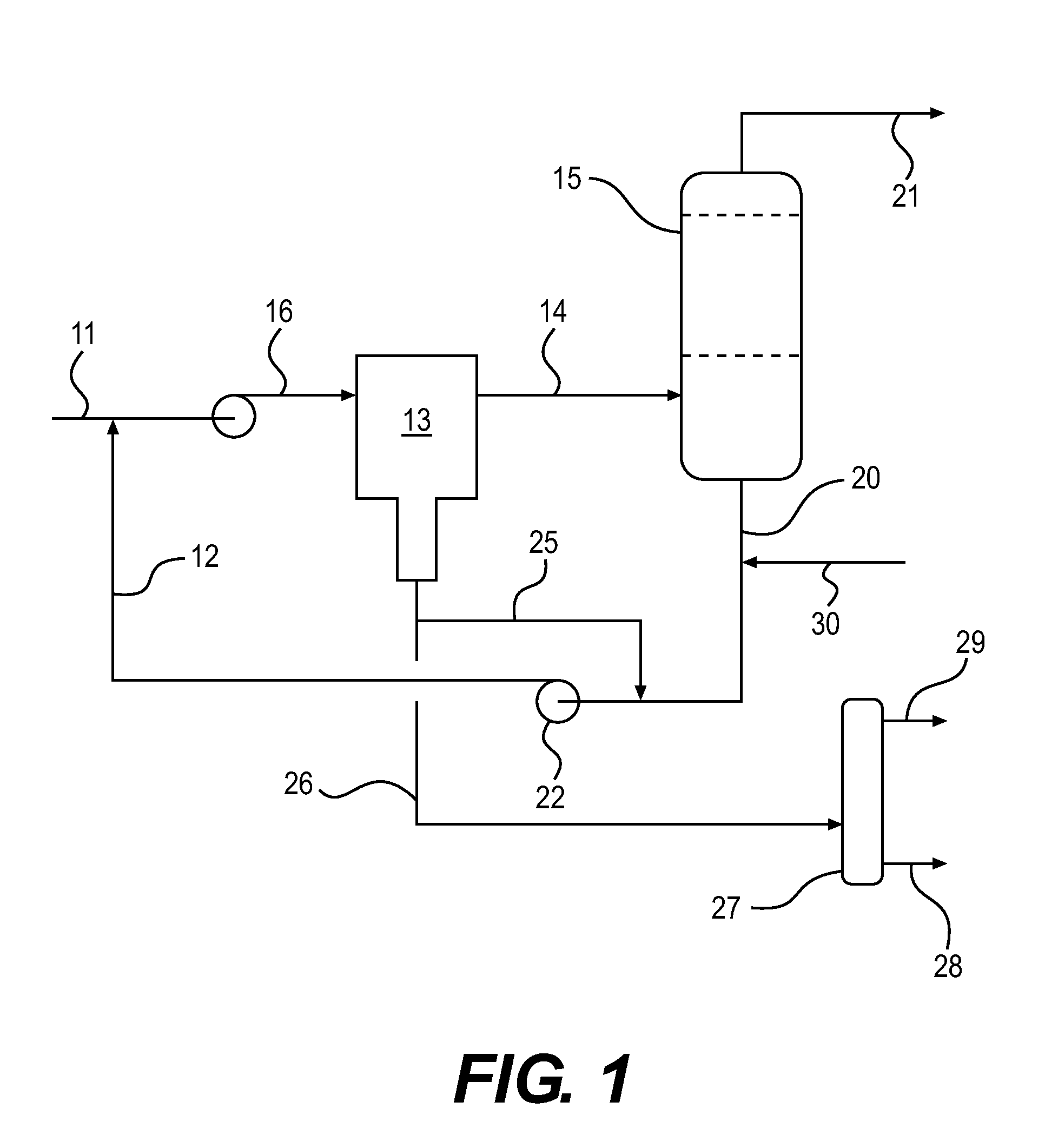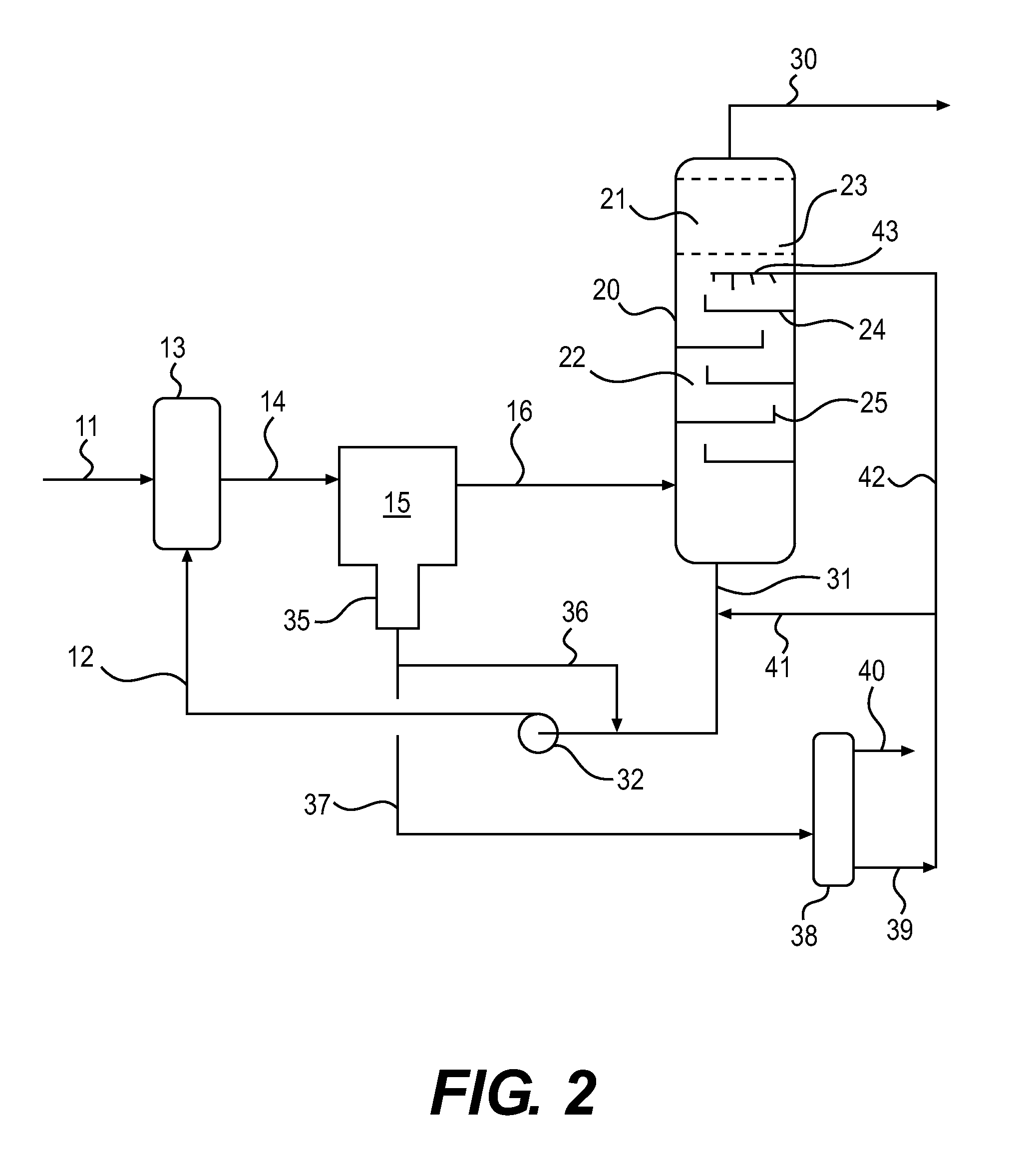Salt drying process
a drying fluid and salt technology, applied in the direction of dewatering/demulsification with chemical means, separation processes, gaseous mixture working up, etc., can solve the problems of inability to control, more salt consumption than is required, etc., to reduce salt consumption, increase the efficiency of the dryer, and reduce the salt consumption
- Summary
- Abstract
- Description
- Claims
- Application Information
AI Technical Summary
Benefits of technology
Problems solved by technology
Method used
Image
Examples
Embodiment Construction
[0016]The present invention is applicable to the drying of liquid and gaseous hydrocarbon fluids. The method is particularly applicable to the separation of water from gases such as natural gas as well as light hydrocarbon liquids of relatively low viscosity, comparable to that of water. The method is of particular applicability to the separation of water from liquid refinery streams such as catalytically cracked naphthas, heavy naphthas and to product streams such as gasoline (including heavy gasoline and light gasoline), middle distillates such as home heating oil, vaporizing oil, road diesel including all ASTM D2 diesels, kerosene type aviation fuels, as well as potentially to other liquid hydrocarbon streams which require removal of water in order to meet product specifications or other service or commercial requirements. Normally, the amount of water which is present in these materials prior to separation will be relatively small, typically not more than about 5 volume percent,...
PUM
| Property | Measurement | Unit |
|---|---|---|
| surface energy | aaaaa | aaaaa |
| surface tension | aaaaa | aaaaa |
| pore size | aaaaa | aaaaa |
Abstract
Description
Claims
Application Information
 Login to View More
Login to View More - R&D
- Intellectual Property
- Life Sciences
- Materials
- Tech Scout
- Unparalleled Data Quality
- Higher Quality Content
- 60% Fewer Hallucinations
Browse by: Latest US Patents, China's latest patents, Technical Efficacy Thesaurus, Application Domain, Technology Topic, Popular Technical Reports.
© 2025 PatSnap. All rights reserved.Legal|Privacy policy|Modern Slavery Act Transparency Statement|Sitemap|About US| Contact US: help@patsnap.com



